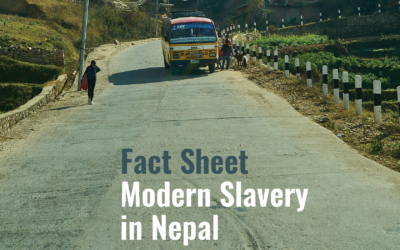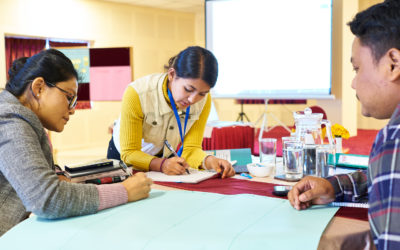This video, produced by Free the Slaves, takes a big picture look at slavery in Nepal, and how FTS works to end it.
We’ve told you about Human Goods, a magazine-style website that publishes feature-length articles on modern-day slavery around the world. Christa Hillstrom is the journalist who founded and manages the magazine-style website. She has reported on human rights issues both in the U.S. and in India. (Learn more about Hillstrom here.)
Read ‘Nepali Women Vulnerable to Multiple Enslavement’
Her most recent article on Human Goods is a profile of Shanta Sapkota, founder of the Peace Rehabilitation Center (PRC) in Kathmandu, Nepal. PRC is a safehouse where survivors of sex trafficking find sanctuary and rehabilitation.
Read about Free the Slaves work in Nepal: ‘Bringing All the Children Home from Slavery’
Hillstrom’s article focuses on the slow, often unglamorous work of rehabilitation. Often, news stories focus on raids and rescues—the action-packed moments when victims are pulled from enslavement. Experience has taught us that, without holistic programs that deal with the root causes of slavery, people find themselves re-enslaved, re-victimized. Raids and rescues are not enough to eradicate slavery. Hillstrom writes:
“In the media, sex trafficking has become the most tantalizing. There’s a tremor of something excitement-like when women are plucked out of the red-light squalor of ‘Third World’ megacities on camera. There’s a glamour in the raids.” But the work doesn’t end there. For survivors, the long road to recover has only just begun. Hillstrom continues: “Behind the unremarkable walls of safehouses like PRC… the plodding work of rehabilitation takes place. For caregivers like Sapkota, it’s gradual, wrenching, and also rewarding.”
Read ‘Rehabilitating Enslaved Circus Performers in Nepal’
Here is Christa Hillstrom’s article, ‘Peace on Earth’:
It’s a well-worn path, several lanes wide, that flows from one nation into the other: sprawling, spectacular India, and the snug mountain gem of Nepal. The actual border is hard to discern because passports are rarely examined where the meager sprawl of Nepal’s Birgunj breaks for India’s simmering sister town, Raxaul. No one stops the men in trucks carting Indian goods up into the Himalayas, sides ablaze with folk art. Or the auto-rickshaws and chortling buses that taxi day laborers back and forth in the clingy heat. Hundreds of migrants snake through the traffic—pedestrians spilling out on a sunbaked floodplain; past two tan-clad officials smoking bidis at a card table, shunted almost out of sight and sprayed with what looks like hand-drawn letters: “Indian Customs.”
As with most major crossings, the lanes bubble with commerce, ambition, and the promise of futures both real and imagined. For some, these will shortly be swapped for confinement, betrayal, and death.
It was a few miles from a passage like this that a broker of women ushered a small band of girls through the brush to avoid the border’s activity. When the authorities caught him, they discovered that he’d trafficked women down this route before, including his own pregnant wife. He sold her to the Indian brothel circuit for $100.


